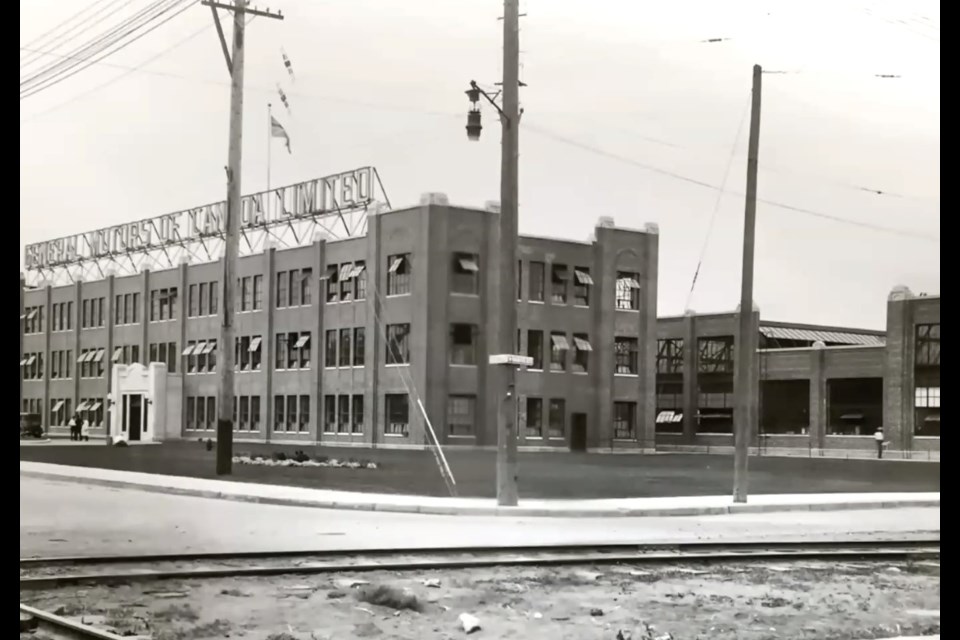Regina – formerly called “Western Canada’s Motor City” by General Motors (GM) – was once home to the historic GM manufacturing plant which first opened in 1928 and put the Queen City on Canada’s industrial map alongside Oshawa and Walkerville in Ontario.
To celebrate this chapter of the province’s history and to end its current season, the Western Development Museum’s (WDM) Virtual Coffee Club met for one last meeting on June 27 as guest presenter Dale Johnson spoke about the days when the plant was at its height.
Regina’s plant helped turn the eye of industrial manufacturers toward the industrial possibilities of the west. The plant contributed “hundreds of thousands of dollars in wages” and helped leverage the local economy through “a tremendous ripple effect,” Johnson said.
“Related businesses built factories near the GM plant to make glass, paint, and batteries. As well,” he narrated, “houses and apartments were built for workers. Businesspeople opened new shops and restaurants near the GM plant.”
Vehicles manufactured in Regina can be distinguished by their spoked wheels, as compared to those produced in Oshawa which had solid wheels – among a few other technical details.
The original factory created 400 jobs. At the time, Regina’s population was 53,354 – meaning that, by today’s population of 228,928 (2017 statistics), this would be the equivalent of one business creating approximately 2,000 jobs.
General Motors soon built a “posh new dealership” in downtown Regina to show off its products. “That red brick building is still standing and is now used for offices,” Johnson said.
Regina’s plant represented a tremendous decade of growth, but the good times didn’t last long.
“When the stock market crashed in October 1929, the Regina plant had been open for less than a year,” he continued. “Then came the drought, devastating the crops in Saskatchewan.
“No province was hit harder than Saskatchewan. Automobile sales dropped off, and with the economy in shambles, GM laid off some workers in early 1930. By August 1930, production was halted.”
The plant reopened in March 1931, but shut down only a few months later.
With the economy gradually recovering in 1937, GM announced it would once again reopen its Regina plant. Due to the fast pace of industrial progress at the time, a $700,000 refurbishment was required before the plant could resume operations.
GM’s vice president Harry J. Carmichael caught a train from Oshawa to personally attend the reopening ceremony. In his address he spoke about the necessity of corporate Canada helping those firms hit hardest by the depression.
“Our company… (is) not guided by the necessity for production facilities, but by a belief, right or wrong, that it is in the economic national welfare that we extend a helping hand to the western provinces in their greatest time of need,” Carmichael was quoted in a Dec. 16, 1937, edition of the Leader-Post.
One decade later the federal government took over the plant to manufacture munitions during the Second World War. The plant was renamed “Regina Industries Limited” and quickly became the largest munitions plant in Saskatchewan employing 1,596 men and women by 1943.
Despite some talk of resuming automotive production after the war, production techniques and distribution methods changed so dramatically that it no longer made sense to attempt this.
The original GM building continues to stand proudly on the corner of Eighth Avenue and Winnipeg Street in Regina but was decommissioned in 2020 after being used for various commercial purposes.
As of 2021, environmental concerns including asbestos are leading factors in its possible near-future demolition. The adjacent office building, however, remains protected due to its heritage designation.
To attend future virtual meetings, visit WDM.ca/CoffeeClub or call the museum’s program co-ordinator Alexis Jones at 306-693-5989. Each presentation is akin to watching a video with the option to ask questions near the end.
To access the museum’s archived presentations, visit the WDM’s YouTube page, ‘WDM Coffee Club.’




